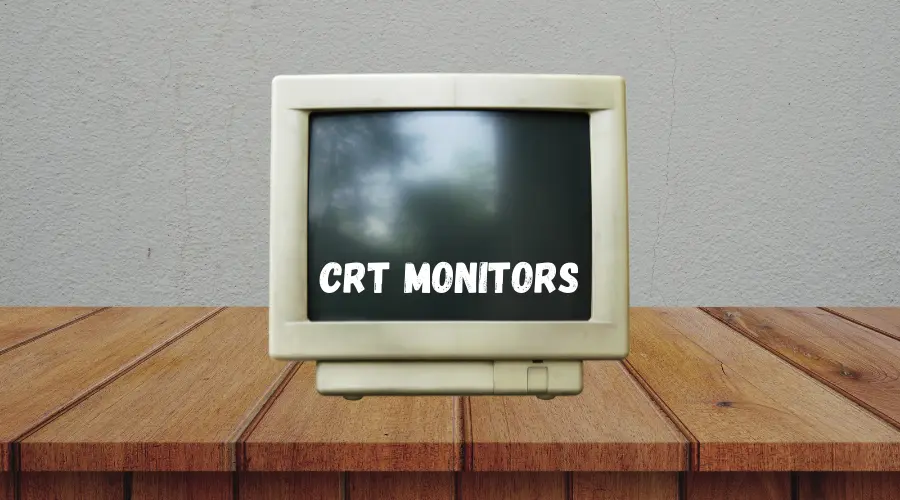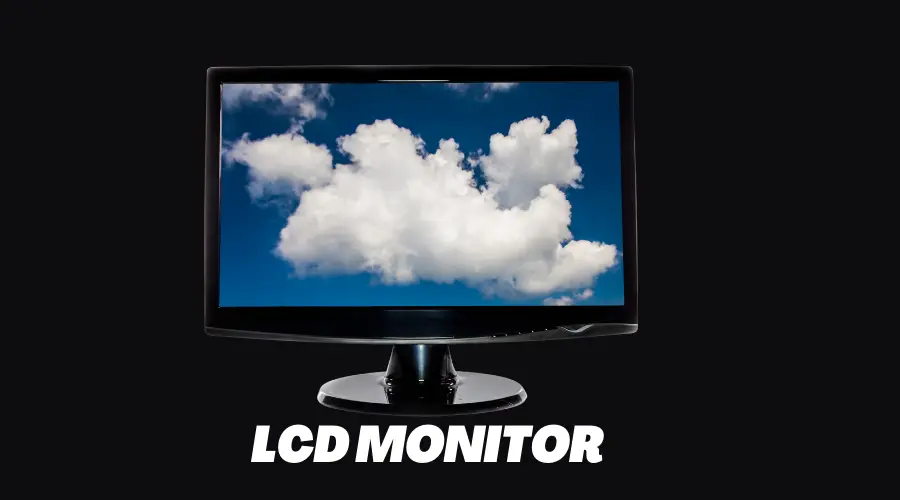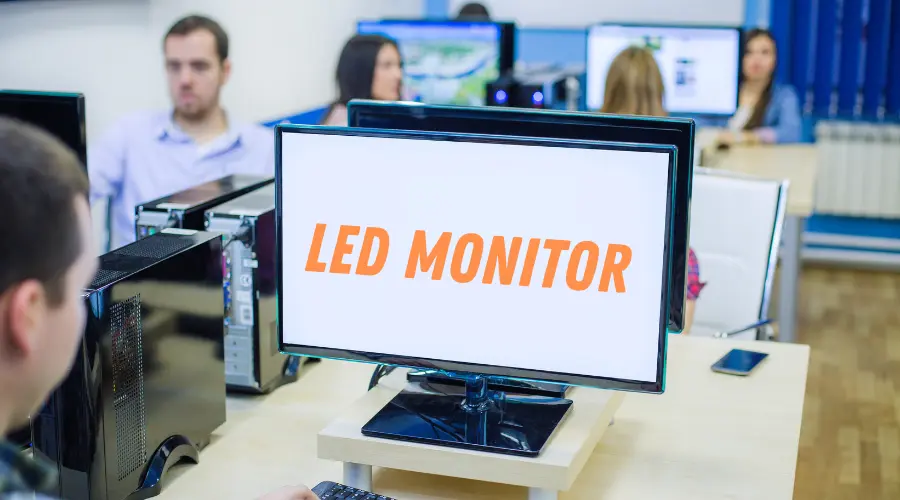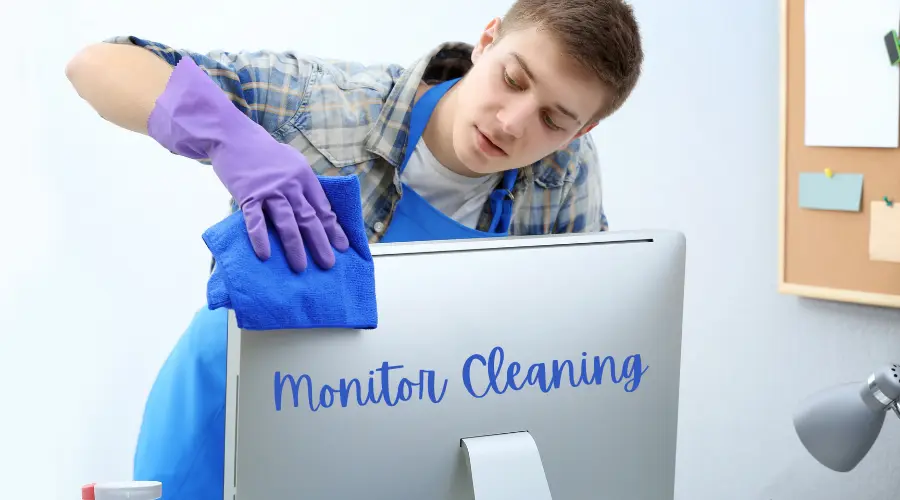When you buy new computer hardware, you automatically assume that it will last for years.
While this is generally the case for the first couple of years, you may begin to notice problems with your hardware.
So, How Long Does a Monitor Last? An average computer monitor lasts for about 30000 to 60000 hours on moderate usage daily. With low usage and proper care, it can last about 40000 hours to 65000 hours.
This article will look at the average lifespan of computer monitors and provide you with an estimated lifespan considering different types of monitors.
I will discuss the lifespan of LED, OLED, and Cathode Ray Tube monitors, along with other common types of monitors.
The average life of a computer monitor depends on a number of factors, including the brand, model, and age of the monitor.
Why Should you Trust Me? Hi, I am Anirban Saha, an Engineer with a Specialization in Electronics and Communication Engineering. I have experience in Smart TVs, Electronics circuits, and Computer peripherals.

Let’s get started!
How Long Does a Monitor Last?
An average computer monitor’s lifespan varies depending on the panel technology and many factors.
Here is the table below showing the average lifespan of computer monitors in hours and in years:
| Monitor Type | Average Lifespan in hours | Average Lifespan in Years (considering 8 hours per day) |
| CRT Monitors | 18k to 25k Hours | 6 to 8 years |
| LCD Monitors | 30K to 60k Hours | 10 to 20 years |
| LED Monitors | 80k to 120k Hours | 30 to 40 years (In ideal condition) |
| OLED Monitors | 100k Hours | Around 35 years (in ideal condition) |
Average Lifespan of Cathode Ray Tube Monitor

CRT monitors have a life expectancy of 18,000 to 25,000 hours which is 6 to 8 years on average considering users using it for 8 hours/day.
They are going almost obsolete nowadays considering the newer flat panel monitors coming to every home and replacing them.
If you still have a CRT monitor and it has stopped working, it is better to replace it with a modern LED or OLED monitor than to repair it again.
Average Lifespan of Liquid Crystal Display Monitor

The average lifespan of an LCD monitor varies from 30,000 to 60,000 hours, which equates to roughly ten to twenty years of active usage. Compared to CRT and plasma monitors, LCDs are much more durable, lasting between ten and twenty years with proper care and maintenance.
The light source, a liquid crystal solution sandwiched between two layers of polarizing material, is responsible for producing the image and providing contrast and color.
Depending on the quality of the material used for the monitor, it can last from 50,000 to 80,000 hours.
LCDs use different liquid crystal families for their pixel layers. The first layer contains a thin layer of liquid crystal molecules, which can twist and flex in response to changes in molecular orientation.
They are arranged between polarizing filters and color filters to determine which wavelengths of light pass through.
The second layer blocks the light that passes through the polarizing filters.
Consequently, an LCD has a lower refresh rate than a plasma or LED monitor, which results in visible artifacts.
Average Lifespan of LED Monitors

LED monitors can have an average life expectancy of 80,000 to 120,000 hours – this translates to 30 to 40 years, depending on how much you use them.
LEDs are made from silicon, which has certain properties that depend on temperature.
Compared to LCD monitors, LED computer monitors have a longer lifespan.
Even though they are more expensive than LCD monitors, they are guaranteed to be energy-efficient and provide a more vivid image.
Average Lifespan of OLED Monitors
OLED monitors have an average lifespan of up to 1,00,000 hours.
The average lifespan of an OLED monitor is considerably longer than that of a conventional LCD monitor.
But there are still some factors that you should keep in mind. For example, OLEDs can suffer from “burn-in,” or degradation of pixels over time.
However, the cost is very high. Compared to the typical LCD, OLEDs cost between four to eight thousand dollars.
OLEDs are not cheap, but their price is justified by the benefits they offer.
Moreover, you can get good picture quality for a fraction of the price. You can choose from a variety of sizes, ranging from 55-inch to 77-inch.
Considering the price, OLEDs are a good choice for most applications.
What Factors Determine the Lifespan of Monitors?
The lifespan of a monitor is directly proportional to its panel quality, and internal components quality, but it can also be affected by usage and maintenance.
Here are the factors in detail that determine the lifespan of monitors:
1. Working Condition and Maintenance Practices
In order to maintain the long life of your monitor, you should avoid using it near liquids and placing it on a desk that receives high traffic.
A strong desk should also be used to keep the monitor in a safe, dry location.
Aside from maintaining the monitor’s electrical components, it’s also crucial to clean the air vents inside the device.
Moisture combined with dust can cause a short circuit and damage its internal components.
Also, adhere to the working conditions mentioned by the manufacturer in their manual.
2. Monitor Usage Duration
Monitor’s usage duration per day is inversely proportional to the monitor’s life expectancy.
This means, that the more your use your monitor per day, the less it would stay good.
The average duration of 4-6 hours/day is good for a monitor to keep it good for longer.
If you are using it for longer than this, you can keep your monitor turned off for 2-2.5hr in between.
3. Voltage Fluctuation
Voltage fluctuation is a big reason which causes issues in monitors often.
It is highly recommended to check for your own connection by a professional if voltage fluctuation often happens.
4. Dust Accumulation in Monitors
Monitors get full of dust in their vents, and in their speaker grills. It is recommended to regularly wipe your monitor with a clean dry cloth to keep it free from dust.
Tips for Improving the Monitor’s Lifespan
The life expectancy of your computer monitor depends largely on the quality of the screen.
While it is not necessary to buy a new monitor every few years, you can extend the life of your current model by taking steps to maintain its quality.
Below are some practical tips for keeping your screen in good working condition. Also, read on to learn about the signs that your monitor is nearing the end of its life.
1. Keep Your Monitor Away from Moisture and Humidity
To increase the monitor’s lifespan, keep it away from moisture and humidity. If your monitor is frequently exposed to moisture and humidity, it may be susceptible to short-circuiting.
2. Regulating Power Fluctuation Using Voltage Stabilizer
Voltage fluctuation is a big reason which causes issues in monitors often.
It is highly recommended to check for your own connection by a professional if voltage fluctuation often happens.
If you are experiencing voltage fluctuations, then using a voltage stabilizer would prevent any issue from occurring to your monitor.
3. Proper Cleaning of Monitor

Monitors get full of dust in their vents, and in their speaker grills. It is recommended to regularly wipe your monitor with a clean dry cloth to keep it free from dust.
Also, if it is near the window, then keep the window closed to reduce the chances of dust accumulation.
Signs of a Malfunctioning Monitor
While you may not have a clue that your monitor is failing, it will often give you warnings before it’s too late.
These nine warning signs mean that your monitor is on its way to the grave.
Some are universal and can apply to most monitor types.
1. Backlight Dimming Issue
When the screen’s brightness is not consistent, the image will appear darker and less expressive. If you notice this in a monitor, you need to take action immediately.
Also, if your TV is much older, say 8-10 years old, it is normal that the panel gets dimmer than it was before.
On aging, the panel loses its brightness slowly and gives you a sign it is getting older and needs to be replaced very soon.
2. Image distortion Issue
If the image appears to be distorted, there may be a hardware problem.
Bad pixels will cause the display to flicker or dither. The brightness knob on the monitor can also cause this issue.
3. Flickering Issues
Flickering is a common sign of a faulty monitor. Checking your monitor’s brightness is vital to determining if it’s the problem. If the color cast persists, you may need to replace your monitor.
4. Dead Pixels Issues
Dead Pixels is another issue that signals that your monitor is getting malfunctioning slowly.
Surprisingly, there are not many solutions to the deal pixels unless you replace your Monitor’s Panel.
If the deal pixels do not go with basic troubleshooting, then you need to bear with it till your monitor’s panel gets replaced.
How to Test a Malfunctioning Monitor?
Have a problem with your monitor? If so, you might be wondering how to test a malfunctioning monitor and fix it.
Fortunately, there are a few simple steps that you can follow to check your monitor and fix it. Follow these steps to identify the issue and get it fixed as quickly as possible. Read on to learn more.
Listed below are some easy steps to troubleshoot a malfunctioning monitor.
1. Check the Connections
First, make sure your monitor is connected to a working computer. Usually, you’ll need to turn on your computer and turn on your monitor.
You may need to connect your monitor to a working computer so you can run the tests.
However, if you’re using a laptop, this test won’t work. So, if your monitor is displaying the same image as for another computer, this is an easy way to fix it.
If you still can’t see anything on the screen, you’ll need to connect the monitor to a power supply.
2. Check the Power Supply
Sometimes, a loose power supply can cause a monitor to not display at all.
If that’s the case, try swapping the power supply between the monitor and the power supply. This will light up the second monitor.
3. Doing Power Cycle
This would help to fix general issues most of the time.
Here is how to do a power cycle:
- Turn off the monitor and take out the plug from the power socket,
- Keep it disconnected for 15 mins,
- Plug the power cord back in the socket and turn on the monitor.
4. Replacing the Monitor
If none of the above things work for you it’s time to visit the technician. If still, that does not work for you, you now need to replace the monitor itself.
Just compare the new monitor cost with the repair estimates from the technician.
Average Lifespan of Monitor FAQs
1. How Often Should You Replace Your Computer Monitor?
2. Can computer monitors be repaired?
3. Can a monitor last 10 years?
4. Do LED or LCD monitors last longer?
5. Do LED monitors get dimmer over time?
Conclusion
Let’s conclude the post on how long a computer monitor lasts!
All these are averages of the lifetime of the monitor. However, your monitor may have a shorter or longer lifespan on case to case basis as an exception.
I hope you enjoyed reading the post.

I’m Anirban Saha, Founder & Editor of TechBullish. With a B.Tech in Electronics and Communication Engineering, and 6+ years of experience as a software developer, I have expertise in electronics, software development, gadgets, and computer peripherals. I love sharing my knowledge through informational articles, how-to guides, and troubleshooting tips for Peripherals, Smart TVs, Streaming Solutions, and more here. Check Anirban’s Crunchbase Profile here.
